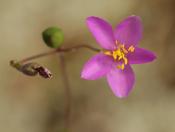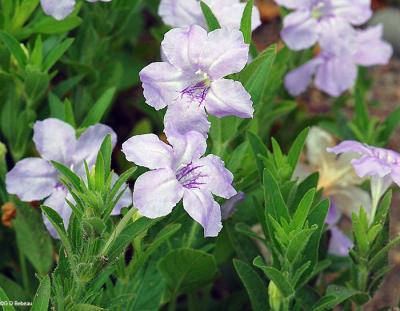Butner Cedar Glade
History
While conducting endangered species surveys for the superconducting super collider project in the mid 1980’s, Harry LeGrand of the North Carolina Natural Heritage Program discovered one of the state’s most unusual and distinctive native plant sites. The Natural Heritage Program brought the significance of the site to the attention of the state and eventually a “registry agreement” was developed. In this agreement, the state agreed to limit future development of the property. Almost 20 years later, the land was transferred to the Town of Butner.
In 2011, Town Council recognized the site for its potential as an excellent Plant Conservation Preserve and agreed to transfer ownership and stewardship of the site to the NCDA & CS Plant Conservation Program. In 2012, Butner Cedar Glade became the newest Plant Conservation Preserve in North Carolina.
Description
Butner Cedar Glade was originally named for the presence of a small, rocky or gravelly opening surrounded by cedar trees in a scientific paper published by LeGrand in 1988. At that time, cedar glades were thought to occur only west of the Appalachians. Today, the site is often called a ‘diabase glade,’ a name that both distinguishes this site from other known glades and recognizes the unique rocks that underlay the site. In addition to many red cedars, the number of Georgia hackberry, aromatic sumac, downy arrowwood, and coralberry growing with prickly pears and eastern agave are part of the reason that botanists and ecologists find this site so unusual. In late spring, sundrops make an impressive floral display.

One of the most unusual and noteworthy plant species found in the Butner Cedar Glade is the Phermeranthus piedmontanus or Piedmont flameflower. This plant is found in small openings or growing on exposed rock. This species was new to science in 2011 and is known only from Butner and an ecologically similar site in Virginia.
Imperiled Plants
There are nine imperiled species (either endangered, threatened or vulnerable) and an additional three species considered significantly rare in North Carolina. For its small size, the site may be the richest for its collection of imperiled species. Common names like glade wild quinine, glade blue curls, granite flatsedge, and glade milkvine help indicate the habitats where some of these plants normally grow. Although most of the rare and imperiled plant species are found in a handful of other locations, a combination of rarity and threats continue to pose concerns about their continued survival in North Carolina. Continued long term protection of the Butner Cedar Glade will make a substantial contribution to conserving these species for perpetuity.
Site Information
Location: Southeastern side of B Street
Acres/Elevation: 6 acres
Community Type: Diabase Glade
Endangered Species: Isoetes piedmontana, Ruellia humilis, Symphyotrichum depauperatum, Trichostema brachiatum
Threatened Species: Cyperus granitophilus, Lithospermum canescens, Panicum flexile, Porulaca smallii
Vulnerable Species: Berberis canadensis
Natural Region: Northern Slate Belt and Basins
Access Information: Permit required. Guided walks may be scheduled. Contact NC Plant Conservation Program.

